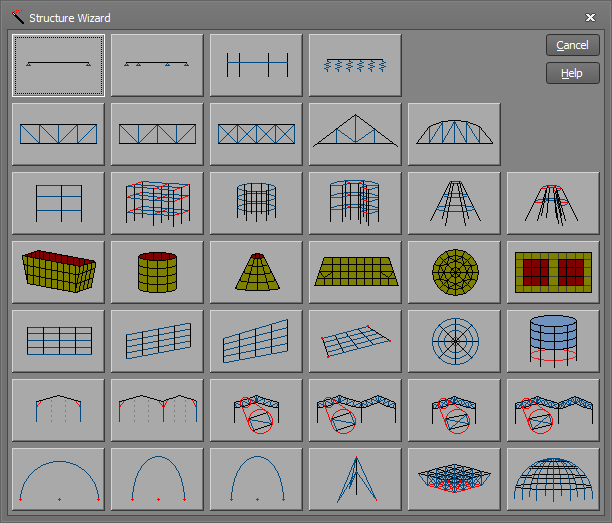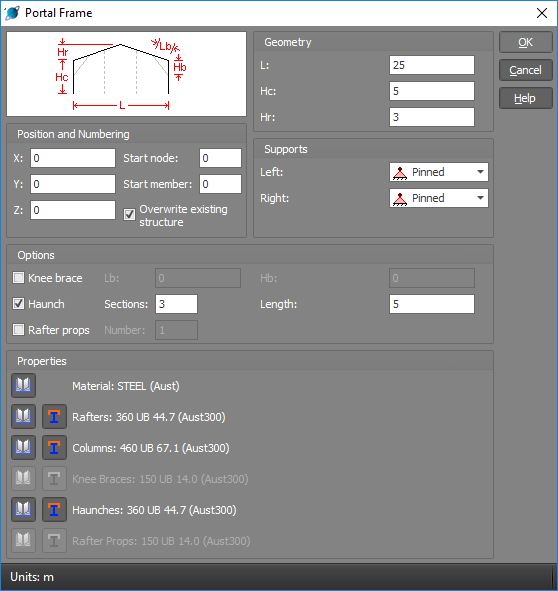Structure wizard
You can open the structure wizard by clicking the  toolbar button or selecting "Structure wizard" from the Structure
menu.
toolbar button or selecting "Structure wizard" from the Structure
menu.

Structure wizard input provides a very fast means of inputting data into SPACE GASS for structures that conform generally to one of the standard structures shown above.
![]() The
structure wizard input method can still be used for structures which don’t
conform exactly to the structures shown above. In such cases it can be
used to input the basic structure and then modified by one of the other
data entry methods. For example, a portal frame with its apex off centre
could be initially input as a symmetrical portal frame using the structure
wizard and then modified graphically by moving the apex node to its correct
location.
The
structure wizard input method can still be used for structures which don’t
conform exactly to the structures shown above. In such cases it can be
used to input the basic structure and then modified by one of the other
data entry methods. For example, a portal frame with its apex off centre
could be initially input as a symmetrical portal frame using the structure
wizard and then modified graphically by moving the apex node to its correct
location.
Once a structure has been selected, a structure specific form is opened which allows you to input basic data relating to the frame geometry, supports, pattern loads, etc. SPACE GASS will then generate the structure, and apply any pattern loading, automatically.
The input form for a single bay portal frame is shown below.

Important note regarding restraints applied to wizard generated models
For all 2D frames generated by the structure wizard, out-of-plane translations on some non-support nodes are restrained. This has two major implications that you should be aware of.
If you extend the frame to 3D after it has been generated then the 2D restraints may no longer be appropriate. If this is the case, you should modify or delete them.
Even though a frame is 2D, it may often be appropriate to allow some nodes to move and/or rotate in the out-of-plane direction. This is especially the case if a buckling or dynamic frequency analysis is to be performed where out-of-plane movements can occur even when there are no loads in that direction. Because of this, you may have to modify the restraints generated by the structure wizard to allow these movements. Conversely, you may have to apply more out-of-plane restraints if those movements are prevented in your real structure.
For more information, refer to Node restraint data and, in particular, the section entitled "Important note about restraining 2D frames".